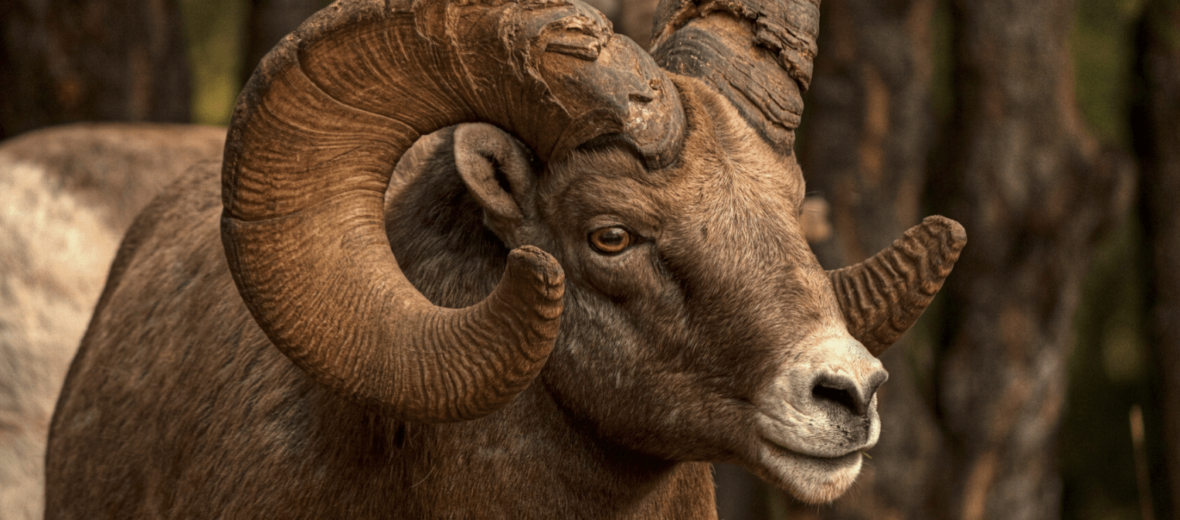
Bighorn sheep derive their name from the impressive, curved horns on males, aka rams. Females have shorter, less curved horns. These sheep have an amazing ability to climb high, steep, rocky mountain areas that would make even an experienced mountaineer tremble! Unfortunately, competition with livestock for food, overhunting, the loss of water availability from human diversion or for use with livestock, vehicle collisions via highways, mining, military bombing on training ranges, and the spread of diseases caused by domestic livestock have decimated the bighorn sheep populations throughout the western U.S.
First the Stats…
Scientific name: Ovis canadensis
Weight: Up to 500 lbs.
Length: Up to 5 feet
Height: Up to 3.5 feet
Lifespan: Up to 14 years
Now on to the Facts!
1.) Their horns alone can weight over 30 lbs. That’s more than their entire skeleton!
2.) There are 3 subspecies, that occupy different geographical regions: the Sierra Nevada bighorn sheep, the Rocky Mountain bighorn sheep, and the desert bighorn sheep.
3.) Primary predators include mountain lions, wolves, coyotes, bears, and golden eagles.
4.) Due to their incredible balance, split hooves, and rough gripping hoof bottoms, bighorn sheep can stand on ledges that are only 2 inches wide.
5.) These sheep are able to leap from ledge to ledge at over 20 feet!
But wait, there’s more on the bighorn sheep!
6.) Being the incredible climbers that they are, they can be spotted at elevations of around 10,000 feet up!
7.) They eat shrubs, grasses, cacti flowers, and fruit. As well as a variety of other plants.
Did you know…?
During fights, that can last for up to 24 hours, bighorn rams can lunge themselves at their opponents at speeds of up to 20 mph! That’s using your head.
8.) Females, or ewes, give birth in spring.
9.) The ewes will hide their young high up in rocky ledges to keep them safe from predators. Although, the golden eagle still predates their young.
10.) Ewes birth 1 lamb per year and the lamb stays with their mother for their entire life.
But wait, there’s still more on the bighorn sheep!
11.) These sheep have very good vision, and are able to spot predators from up to a mile away!
12.) Water can sometimes be hard to come by, so they get most of their moisture from the food they eat. But, if they find a water source, they may drink up to 20% of their body weight!
Now a Short Bighorn Sheep Video!
Also, check out the Critter Science YouTube channel. Videos added frequently!
Want to suggest a critter for me to write about? Let me know here.



